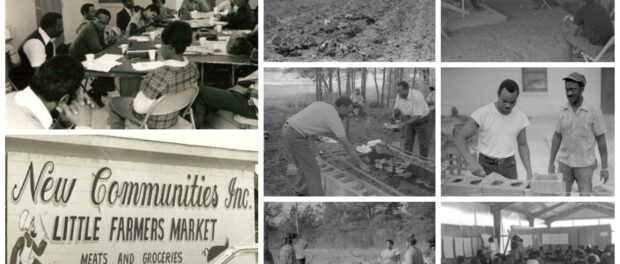
The “CLTs and Community Organizing” webinar closed the 2021 International Community Land Trust Festival on December 7, 2021, with participation from CLT leaders in the United States, England, Belgium and Puerto Rico. The event was organized by the Center for CLT Innovation with simultaneous translation into Spanish, English and Portuguese.
The first edition of the International Community Land Trust Festival ran from September to December 2021. The festival consisted of a series of events aimed at exploring and debating CLTs and related themes. CLT leaders came together to share experiences stemming from their work with the model, painting a picture of where the global CLT movement is today. The highlight of the festival was World CLT Day—October 29—when hundreds of residents and leaders the world over shared messages celebrating Community Land Trusts.
Marking the end of this cycle was the “CLTs and Community Organizing” webinar. The event addressed the importance of community organizing for establishing and maintaining Community Land Trusts. The invited guests were CLT leaders who started off as community organizers and later on got involved in building CLTs.
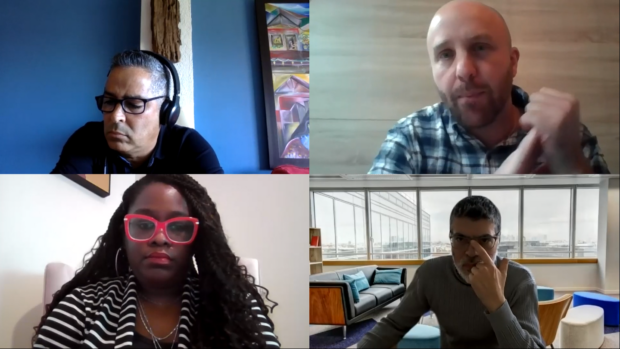
The online discussion began with a brief reflection on the process of becoming a community organizer. Ashley Allen, executive director of the Houston CLT, says she started off working with people experiencing homelessness and soon committed to joining the struggle for affordable housing, always from the standpoint of grassroots community work. Inside this movement, CLTs appeared as a tool able to answer many of her yearnings:
“I always wanted to focus on how to create affordable housing and how to keep affordable housing inventory in cities that are rapidly experiencing gentrification. In the creation of the Houston CLT, the community really did lead those efforts for many years.”
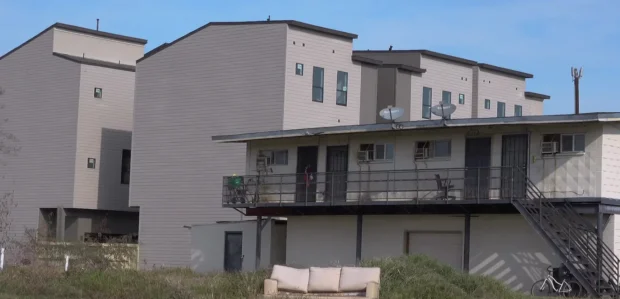
However, stimulating residents’ engagement is not easy. Often, suspicion with something new drives people away, making the foundational work harder. According to Allen, one of the ways to reach people is to participate in the community’s day to day life, showing up at ordinary spaces such as grocery stores and public squares, and talking to residents in their own environment:
“You have to build relationships… You have to go where people are. That’s how our organizing began: within the community itself.”
We can see another example of how community organizing is crucial for CLTs in the city of Boston. In the 1980s, the neighborhood of Dudley Square saw itself in a dire situation: litter-strewn streets, precarious homes, plots of vacant land accumulating debris. The entire landscape revealed deep neglect. Residents then got together to deal with the problems that plagued their neighborhood and to bring on the complete transformation of their neighborhood.

This story was told by Tony Hernandez, director of Dudley Neighbors Inc., one of the world’s best-known CLTs. The CLT had a central role in the neighborhood’s revitalization, ensuring territorial improvements while, at the same time, keeping homes at affordable prices. While showing us how the neighborhood has changed through the decades, Hernandez stressed that none of this would have been possible if the community hadn’t headed the process:
“It’s always about the community, it’s about the people. What you all see in this picture is the result of the people coming together and organizing and having an impact in what the physical revitalization of a neighborhood could look like.”

Moving on to Europe from the United States, Geert de Paul presented the story of the Brussels CLT, located in the Belgian capital. This was the first CLT established in continental Europe, in a city that has been facing a veritable crisis of affordable housing, where a significant part of the population cannot afford to pay market rates for a home. The movement around CLTs came about from the acknowledgment of a lack of policies promoting access to housing and a desire to find a solution that came from the people. According to de Paul:
“The idea grew that perhaps we should not only demand from the politicians that they build affordable housing for the poor, but that we could also bring people with housing needs together to be part of the solution.”
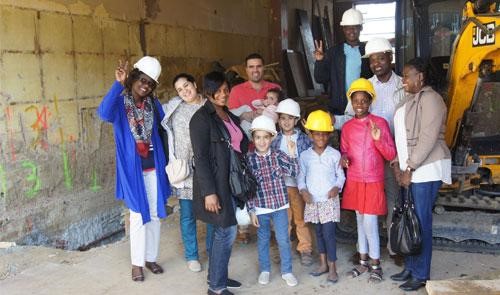
Adopting Community Land Trusts as a housing solution for cities is not exclusive to countries of the Global North. In Latin America, we also have the inspiring experience of a CLT established in a group of favelas, located in the center of Puerto Rico’s capital, the city of San Juan. The Fideicomiso de la Tierra Caño Martín Peña is one of the rare cases in which a CLT was applied in the favela context and has since served as a global example, both due to the improvements obtained for the community and to the degree of community organizing involved.
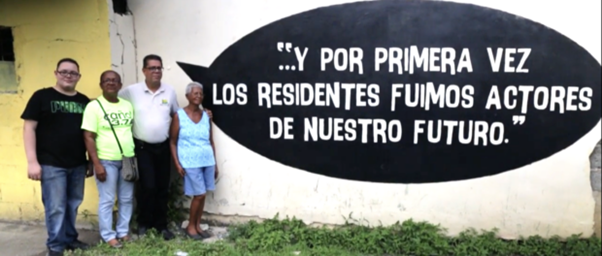
This experience was told by Alejandro Cotte Morales, one of the leaders involved in the creation and maintenance of the Fideicomiso de la Tierra Caño Martín Peña, which is currently under his stewardship. From the onset, the process of building this CLT took place amid threats of evicting the Caño’s century-old communities: “People were scared of disappearing as a community, since many surrounding communities had already disappeared as part of gentrification. This fear of disappearing forced community leaders to find alternatives that would protect us as a community.” The alternative was found in the CLT model. After much struggle, residents were able to institute it officially under Law 489, in 2004.
In speaking of his experience with the Caño Martín Peña CLT, Morales is adamant to stress the crucial role of collectivity for the CLT:
“Community organizing is the main backbone of any CLT. You cannot have any CLT if you do not work with the people. People cannot be objects, they have to be the subjects. They should be protagonists in their causes.”
Although they exist in very different contexts, all these international experiences with CLTs point to a common path. Without the involvement of residents, without a movement that genuinely starts from the ground up, it is not possible to truly establish a Community Land Trust. It is a long term job, with numerous challenges along the way, but only through a mature and permanent organizing process is it possible to achieve a lasting solution.
We can see from the panelists’ testimonies how the dimension of community organizing is inextricable from CLTs, and that initiatives with a high degree of resident engagement and participation have much greater potential for reaching their objectives. This is not a mere detail. Community organizing is one of the pillars of CLTs, critical for, in the words of John Davis (of the Center for CLT Innovation): “guaranteeing the community in Community Land Trust.”
